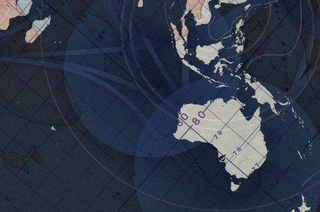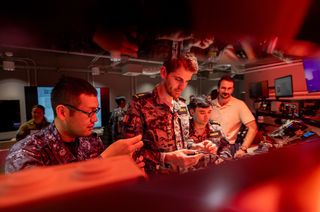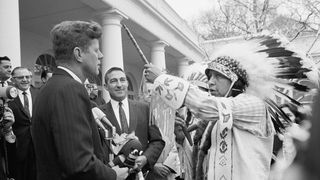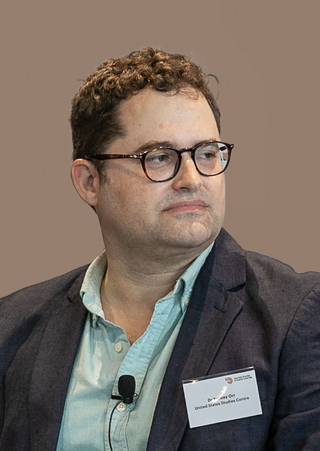Introduction
In 2023, voters rejected the Australian Indigenous Voice referendum. It sought to change the Constitution by creating an Aboriginal and Torres Strait Islander advisory body to the Federal Parliament. Commonly referred to as ‘the Voice’, some supporters expressed that its defeat by a 60-40 margin signalled an end to serious Indigenous input into government for generations. Although the referendum failed, analysis of the vote from an Australian National University survey shows broad support for Indigenous Australians and willingness to provide aid in improving their lives. This sentiment also exists among ‘No’ voters. In such a context, the private sector and civil society can create a mechanism for Indigenous input into governance without running into the impediments that many voters associated with changing the constitution. A private, NGO-based system has already proved effective for Indigenous people in the United States through the National Congress of American Indians (NCAI).
To create such an organisation, donations from individuals and corporations would be needed to raise the capital for a self-sustaining entity. With an NGO located in Canberra, Indigenous Australian communities could follow a similar model to that adopted by American Indians, whose NCAI has lobbied the US Government, conducted research and supported outreach for Indigenous Americans for approximately 80 years. Such an organisation could be built into an existing peak agency or be created for this purpose. A private fundraising effort to build an endowment capable of supporting such an NGO would be necessary to provide stability for its operation.
A private voice for Indigenous people in the United States
The NCAI is funded by a mix of organisations such as private grant-giving foundations, tribes and departments within the US Government. It provides many of the services that the Voice to Parliament envisioned and has been non-controversial among the US public. Its creation in the 1940s was a watershed in the relationship between tribes and the US Government. The Indigenous-led NCAI was designed by former government workers to be an American Indian advocate as well as a liaison between the US Government and tribes. It is largely independent of government interference and able to operate according to tribal needs rather than voting patterns of the US public. It has provided analysis and policy advice that improved the lives of American Indians. There are multiple metrics showing the improvement of American Indian communities because of the work of the NCAI. Among them, life expectancy for tribal members has risen by over 20 years.
The NCAI combines several approaches to voice the perspectives of American Indians. Partially a think tank, it develops informed perspectives and reports through research on social issues affecting American Indians. To influence federal legislation and policy, a branch of the NCAI works as a lobbying agency in Washington, DC, to represent American Indian interests. This is needed because, like Indigenous Australians, American Indians are only a small percentage of state and national populations and thus find it challenging to have their interests met through their representatives. Moreover, the 575 federally recognised tribal governments in the United States are unique entities not served by existing industry-based lobbying.
NCAI successes
The successes of the NCAI are its direct effect on legislation that has been passed and the indirect overall improvement in the lives of American Indians. NCAI was instrumental in the creation or passing of the following acts: the Voting Rights Act of 1965, the Indian Self-Determination and Education Assistance Act of 1975, the Clean Water Act of 1972, the Native American Graves Protection and Repatriation Act of 1990, among many others, as well as numerous Supreme Court decisions. Additionally, the NCAI promoted American Indian interests during periods of government expansion, such as President Lyndon Johnson’s Great Society programs, which brought services to previously excluded groups in the United States. The NCAI, over time, moved from broad legislation to more focused issues. While other NGOs representing ethnic minorities in the United States, such as Black Lives Matter, have seen a backlash against their activism, the NCAI and American Indians have not.
However, American Indians do not have parity with the general population of the United States. American Indians lag in income, wealth, home ownership and especially male life expectancy. The American Indian male dies approximately 20 years before his Asian American counterpart. However, compared to before such legislation, American Indians have shown improvement. In 1968, the life expectancy of an American Indian was approximately 50; now it is 35% higher.
Such a model from the United States for Indigenous representation may offer a viable pathway forward after the Voice referendum. It can be more flexible in creating impactful legislation, policy and performing outreach activities on Aboriginal issues. Creation of an organisation after the model of the NCAI would not require a double majority vote to amend the Australian constitution, nor does it need the buy-in of people who did not support the referendum. An independent, privately funded, Indigenous voice to parliament has the advantage of drawing on the resources within a mobilised population, six million of whom already gave their support through their votes. With such a sizable number of backers, an endowment could be possible. This would provide a permanent source of funding and thus provide stable financing for an organisation like the NCAI in Canberra.
Cost of a private Voice to Parliament
The scale and operations of the Indigenous Australian NGO determine the amount of endowment needed to support it. The most recent national representative body to the Australian Government was the National Congress of Australia’s First Peoples, which existed from 2010 to 2019. It had an operating budget of approximately A$1 million and had 12 full-time employees. A more robust organisation conducting research and outreach might imagine a budget of five to ten times that amount. With a high estimate of ten times the National Congress of Australia’s First Peoples, an endowment with an industry average of 7.7% return on investment in 2023 would need A$150 million to provide for this budget.* However, to keep up with inflation, the endowment would likely need to be approximately A$200 million.
Is this amount of funding possible for Australians? According to the Australian Tax Office, the total amount of tax-deductible donations came to A$4.55 billion in 2021-2022. An endowment to operate an NGO in Canberra would require approximately 5% of that total amount. This is less than half of the approximately A$450 million that was spent by public and private entities for the Voice referendum. Nevertheless, A$200 million in fundraising is a large amount given the nature of philanthropy in Australia. Under normal circumstances, this would seem unachievable. However, given that 6 million people voted in favour of the Voice to Parliament, this is likely among the most substantial and motivated fundraising bases in Australia. Even small donations from such a large number of people could produce an endowment necessary to run an NGO. The median donation amount per Australian is A$200, with a mean of A$750, which is skewed by the small number of large donations. With 6 million supporters of an Indigenous Voice to Parliament, only small donations would be necessary. Even if such an endowment is only partially created, such a representative NGO would be possible. It would require yearly support from Aboriginal organisations as well as individual and corporate donors.
Post-referendum: Why it might be different
Aboriginal and Torres Strait Islander leaders have, in partnerships with government and private entities, attempted to build an institution similar to the NCAI within Australia. Created with support from the Australian Human Rights Commission, the National Congress of Australia’s First Peoples (2010-2019) provided advice and guidelines for the federal government. In principle, it was comprised of 120 Aboriginal and Torres Strait Islander people who were elected by Indigenous Australians. In practice, mismanagement and a lack of consistent funding as federal policy changed with successive administrations left the Congress ineffective. These problems ultimately ended the organisation less than a decade after it was founded. An endowment to maintain consistent funding would help a future organisation avoid a similar fate. Support for such a representative body has been brought to the public because of the Voice Referendum and may provide a stable foundation for such an organisation. A privately funded representative body would also come into a cultural and political landscape with organisations like the Australian Institute of Aboriginal and Torres Strait Islander Studies (AIATSIS) and the Coalition of Peaks in Canberra. Since the closing of the National Congress of Australia’s First Peoples, Indigenous Australians have honed their aspirations for representation into a document that could guide a future organisation. Written in conjunction with the Australian Government over several years and completed in 2021, the Indigenous Voice Co-design Process outlines how a representative body would advocate for Aboriginal people according to their own goals. Given the need for Indigenous input into government and the broad support for Indigenous Australians, the change in the cultural and political landscape of Australia after the Voice to Parliament vote in 2023 can be seen as pointing to a new way of improving the lives of Australia’s most vulnerable community, rather than an ending.
Contact Dr Yancey Orr at yorr@smith.edu
* This is based on average university endowment returns.






